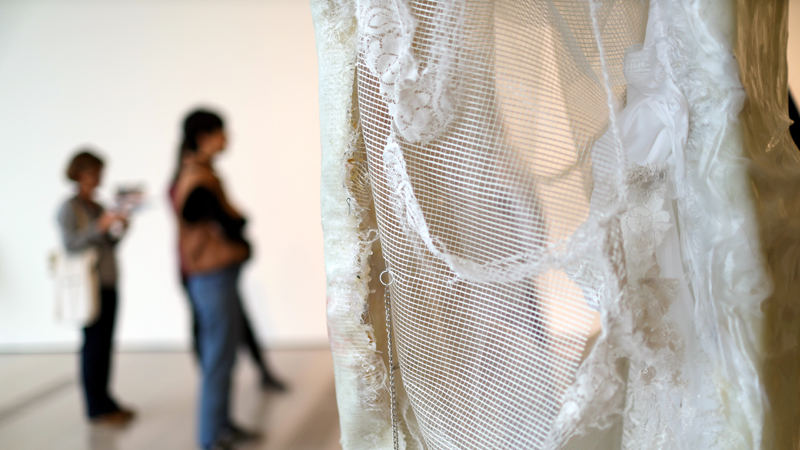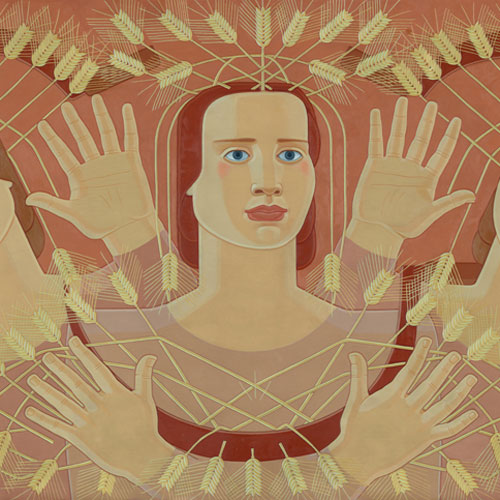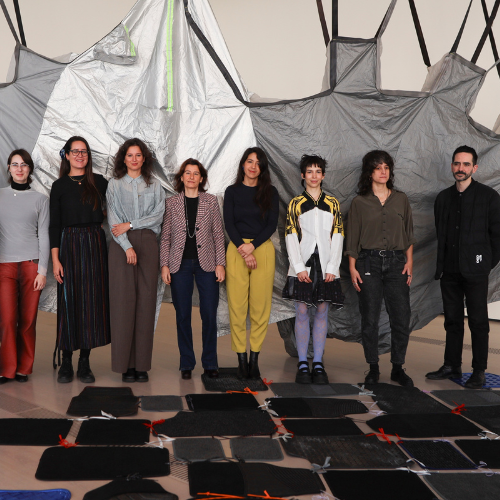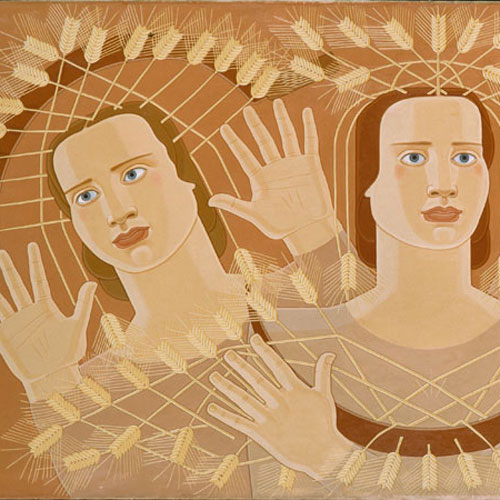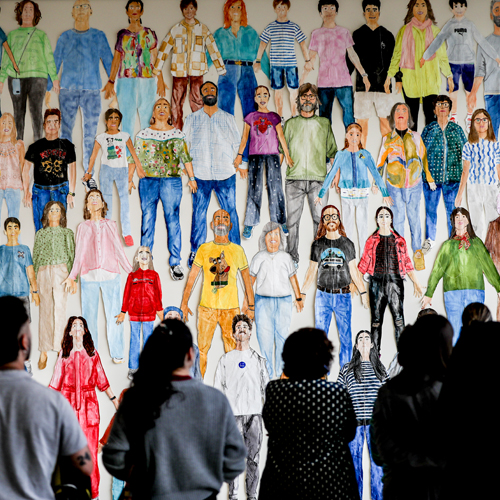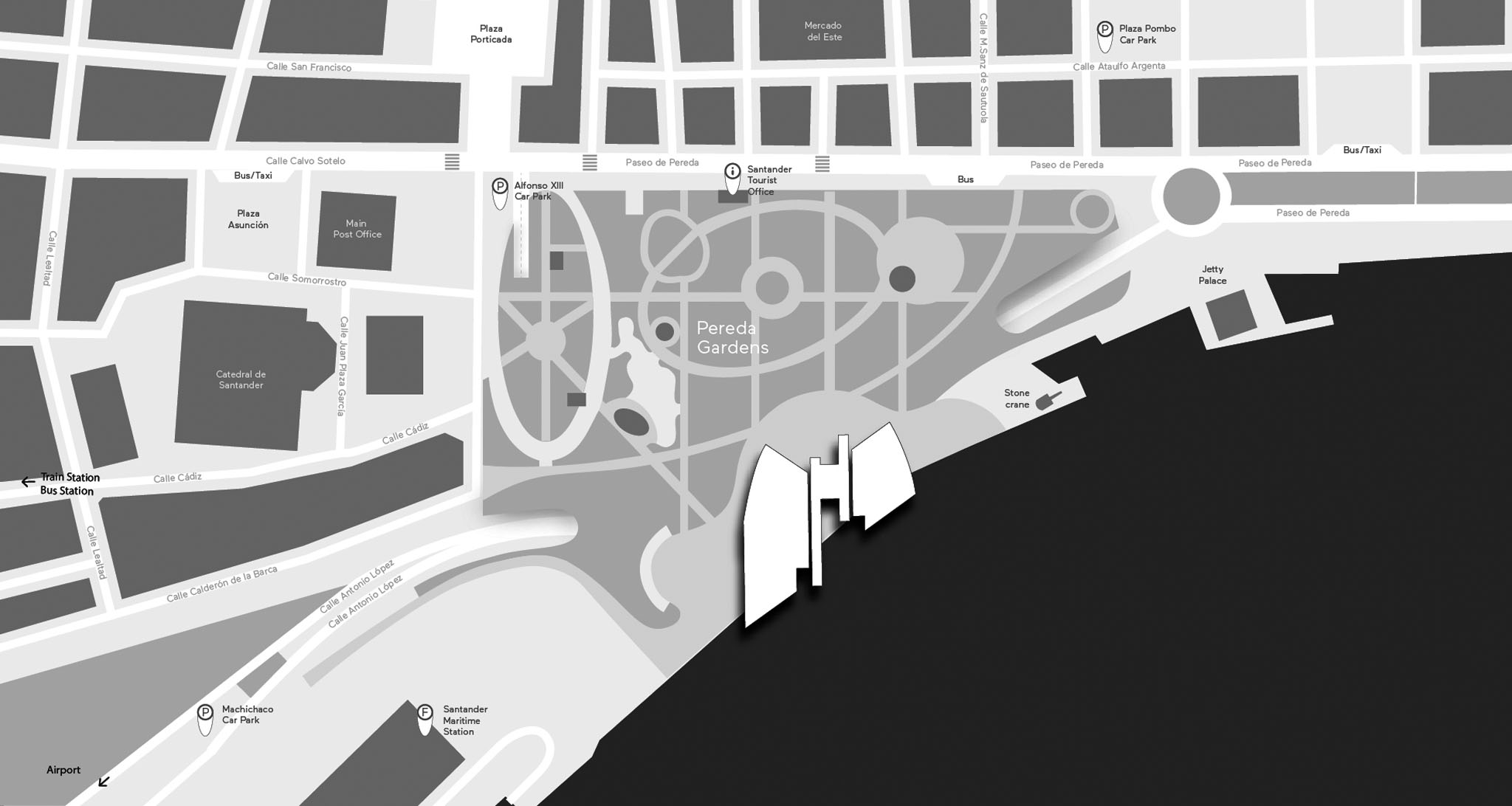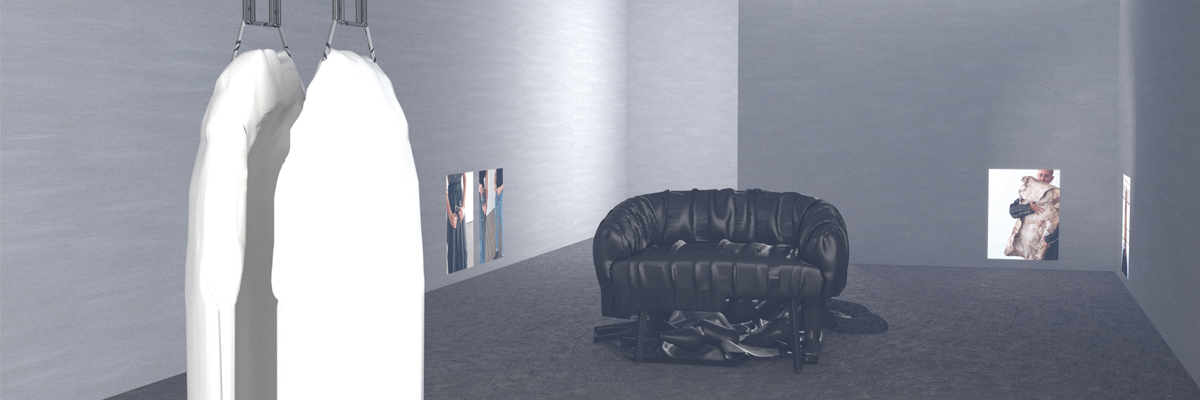
CENTRO BOTÍN PRESENTS ITINERARIOS XXVIII, SIX INNOVATIVE PERSPECTIVES ON CURRENT DEBATES IN CONTEMPORARY ART
- Itinerarios XXVIII assembles and presents different perspectives, interests and artistic practices on the current debates in contemporary art. The exhibition will take place on the first floor of Centro Botín from 18 November 2023 to 31 March 2024.
- This exhibition brings together the works of the artists who were chosen in the 2021 call for submissions for Fundación Botín’s Art Grants: Luz Broto, Lucía C. Pino, Fernando García Dory, Henrique Pavão, Jorge Ribalta and the duo of Patricia Gómez and María Jesús González.
On 18 November of this year, a new edition of Itinerarios, the twenty-eighth, will open its doors to the public. In this annual exhibition, Centro Botín assembles and presents the works by the international artists who are distinguished each year with a Fundación Botín Art Grant. This exhibition series offers a variety of perspectives, interests and artistic practices on the current debates in contemporary art. Ever since it was launched in 1993, more than 200 creative talents have benefitted from these grants, which supports contemporary creation by funding artists who aspire to develop research and production projects in the visual arts. Many of the beneficiaries have established themselves in the international art scene and regularly exhibit their works at important institutions and art events.
Itinerarios XXVIII will show the projects by the six artists chosen in the 2021 Fundación Botín Art Grants: Luz Broto (Barcelona, 1982), Lucía C. Pino (Valencia, 1977), Fernando García Dory (Madrid, 1978), Henrique Pavão (Lisbon, Portugal, 1991), Jorge Ribalta (Barcelona, 1963) and the duo of Patricia Gómez (Valencia, 1978) and María Jesús González (Valencia, 1978). The jury in charge of choosing them was comprised of Sandra Guimarães, artistic director of the Helga de Alvear Museum; Maider López, an artist whose work intervenes in architecture and the public space and a grant awardee in 1998; Manuel Segade, director of the Museo Nacional Centro de Arte Reina Sofía; and the visual artist Jorge Yeregui, a grant awardee in 2013.
Each project on display should be viewed as a work unto itself, as a unique invitation to engage with the languages, materials and networks that these artists have been forging over the past two years. In the opinion of this year’s jury, the themes that the six artists address—the rupture of limits, historical memory, the new materialisms, critical museology, a claim for art as a tool for research and tackling the climate emergency—are a good sampling of the major problems which artistic practices are facing in today’s society.
Itinerarios XXVIII will remain open to the public on the first floor of Centro Botín until 31 March 2024, a period when visitors can connect with the latest contemporary art practices.
Itinerarios XXVIII – Artists
HENRIQUE PAVÃO (Lisbon, 1991)
Henrique Pavão’s work traverses various media (video/film, sculpture, sound and photography), with a focus on each medium’s unique processes and mechanisms as markers of its temporality and history. The Ultimate Romance is an installation comprised of an HD Video (colour, 4’29’’, loop), a sound piece and a bronze sculpture placed inside a vitrine. The work portrays the failed attempt to copy an artefact—the head of the Egyptian pharaoh Senwosret III (c. 1860 BC)—and questions the idea of circular time and notions of failure and loss.
The artist filmed the 3D scanning process of the head of Senwosret III, which is made of obsidian, a material that scanners are unable to copy due to its reflective features. The artifact lies on a revolving plate, in a timeless, circular dance in which red laser lights define and try to copy all its lines, recesses and impurities, intercepting its mirrored black surfaces. The imperfect image captured by the scanner was printed and then cast in bronze. This footage is accompanied by an hypnotic sound piece—a very faithful version of the tune Planet Caravan (1970) by the British band Black Sabbath played by a tribute band called Venïce Cathouse.
‘The head of Senwosret III is in a dance as it is scanned and thus copied—like each chord of Planet Caravan. It is transformed into a virtual image, merging its inherent primitive layer with an extremely futuristic one,’ said Henrique Pavão.
FERNANDO GARCÍA-DORY (Madrid, 1978)
Fernando García-Dory’s practice inquires into the current relationship between culture and nature, from the landscape and the rural to the desires and expectations related to identity, crisis, utopia and the potential for social change. During his Fundación Botín Art Grant, García-Dory has undertaken a social and ecological process whose inquiry started in collaboration with the scientific community at the Royal Botanical Garden in Edinburgh and continued with the local villagers of the mountains of Cantabria—including residents, shepherds and firefighting brigades—who are redefining their relationship with the eucalyptus plantations.
PiensaForesta (ThinkForest) is an installation which takes a six-hectare forest in the Picos de Europa as a case study. This area was planted with eucalyptus trees in the 1970s, dovetailing with the start of the environmental movement and protests against the dictatorship, which coalesced into negative opinions and rejection of this alien forest that feeds the large local paper industry. The room that houses this work acts as a sketchbook about the forest intervention process, imagining a possible regeneration and reuniting—as part of this story—with distillate vessels, models of biomorphic architectures, a sound journey that gives voice to interspecies relations in the forest, maps of the land and archival images.
As the artist himself has reflected, ‘a diverse Atlantic forest system, in friction with the monoculture of the eucalyptus forest, or with other uses, could be the heart of the current debates on the climate crisis, rural policy and representation, as well as future ways of stewarding the land, which draw from art. These are slow processes which require patience, geoengineering and cultivating a mountain—the essence of wilderness to many people—as if it were a garden.’
PATRICIA GÓMEZ AND MARÍA JESÚS GONZÁLEZ (Valencia, 1978)
Patricia Gómez and María Jesús González work as a team to develop projects that try to rescue the memory of places immersed in processes of disappearance or abandonment. They do this by recording the footprint of time and human experience conserved on the walls of architecture. Their work Al pasar cerrar. Bétera Producciones (Close after Entering. Bétera Producciones) is a double audiovisual installation created by recovering fragments of decomposing footage found in the projection room of the cinema-theatre of the last psychiatric hospital in Valencia.
The first installation presents the film material found, like elements of a cinematographic archaeology collection, and reactivates the images rescued in four different projections which enable us to trace the abstract footprint that time has imprinted on the very materiality of the film. The second installation places us in an empty cinema where the audios of the films once shown to the community of internees still resonate. Through the filmed screen, we enter this scenario by running through and flying over it, like a ghost or a bird would do, its only spectators and occupants since the cinema closed its doors to the public.
‘The erasures, stains, corrosion, scratches and visible decomposition of the archives become the features of a new production that uses their degradation to reflect the utter state of abandonment of the place where they come from, revealing its uselessness and failure as a model that locked people up’ (Patricia Gómez and María Jesús González).
JORGE RIBALTA (Barcelona, 1963)
Jorge Ribalta’s photographic work falls within the documentary photograph tradition, yet at the same time it analyses and transforms that tradition by embracing the contradictions, fragilities and unresolved tensions of what he calls ‘the documentary idea’. His historical inquiry is articulated through fantasy and lyricism. The work Variaciones Güell (Güell Variations) presents a visual timeline of two centuries in the history of the Güell family organised into the four spaces that comprise the room where it is exhibited.
Juan Güell y Ferrer and Antonio López y López were the most prominent entrepreneurs in Barcelona during the Cerdá era. Having earned their wealth from their businesses in Cuba between 1820 and 1840, they became innovative businessmen upon returning to the city. The project displayed here is a look at the current state of some of the historical sites associated with the Güell family, including places designed by Gaudí. The images were primarily taken in Barcelona and its environs, as well as in Comillas (Cantabria), Antonio López’s place of birth and the nerve centre of the López-Güell economic-family line, in addition to being a family summer spot, enshrined as a political hub after King Alphonse XII stayed there in the summers of 1881 and 1882. The series also includes portraits of current family members, a complex web of descendants of Eusebio Güell and Isabel López living in Barcelona and Madrid.
In Jorge Ribalta’s opinion, ‘Eusebio Güell Bacigalupi, the son of Juan Güell and son-in-law of Antonio López, embodied the peak of the rise of Barcelona’s industrial bourgeoisie. His known ties with the architect Antoni Gaudí is the great aesthetic rendering of that hegemony, not only in the most emblematic architecture of their day but also in the very image of the city of Barcelona.’
LUCIA C. PINO (Valencia, 1977)
Lucía C. Pino’s practice investigates sculpture through different artistic mediums which view language and matter in their performative dimension. The work undertaken by the artist during her grant is based on sapphic (an adjective related to sexual identity that indicates love between women) archival research from the early 2000s, most of it in the English-speaking world.
Based on a verse by the Greek poetess Sappho, But if u love us, Lucía C. Pino presents a series of pieces produced for this work, grouped under the same title, using materials like iron, latex, fibreglass, used leather rope, zippers, foam, paper, acrylic resin and other elements. They are compositions with deliberately imperfect finishes that retain glimpses of the hand that draws and assembles, referring to archetypal and organic hybrid forms. These pieces as a whole formally forge a critical discourse around the visibility and uses of the expressions ‘butch’ and ‘dyke’ and the policies that take different identity intersections into account (class, gender, race, etc.).
As the artist herself says, ‘being a body means being intrinsically vulnerable, and this is applicable at different scales’.
LUZ BROTO (Barcelona, 1982)
Luz Broto’s work examines the use of built space and the social relations it generates. She makes specific interventions in both public and private spaces and at different scales, such as architecture, urban design and the territory. For her project in this grant, Contactar cristales enfrentados (Contacting Facing Windows), the artist put different interior spaces in the city of Barcelona, where she resides, into contact with each other, continuing her interest in reinforcing the idea of the common in the urban environment.
The intervention consisted of removing the glass panes from windows that face each other at the same level, in different buildings, and replacing them with identical ones. The pairs of removed panes, all of differing shapes and from different types of buildings and parts of the city, are presented in the exhibition space with their outer sides touching, thus eliminating the distance that used to exist between them. The origin of this project was the window of her childhood and that of her neighbour in the small town where she grew up. Based on this initial pair, the artist has extended the action to the city. By asking acquaintances and strangers ‘Is there a window facing your window?’, Broto has travelled through the city’s neighbourhoods trying to contact its residents.
In the artist’s words, ‘during the process I came upon many doors that did not want to open and windows that closed even more tightly, as well as others that tried to draw near and finally some that could be touched’.
Fundación Botín Art Grants
The Itinerarios exhibition series is the outcome of the work undertaken by the artists during the period of their Fundación Botín Art Grants, Their research and production are captured every year in a catalogue as a way to display and archive the different projects. This grant programme promotes training, research and the development of projects by international creators. Ever since it was launched in 1993, it has helped to discover and support the careers of more than 200 artists, some of whom are now widely recognised.
Images for press use
You can register in the press area of Centro Botín’s website to download the graphic material available and its corresponding credits.
PHOTOS: https://ydray.com/get/t/16970218451046GwVkebd7b00c81a4Hl
